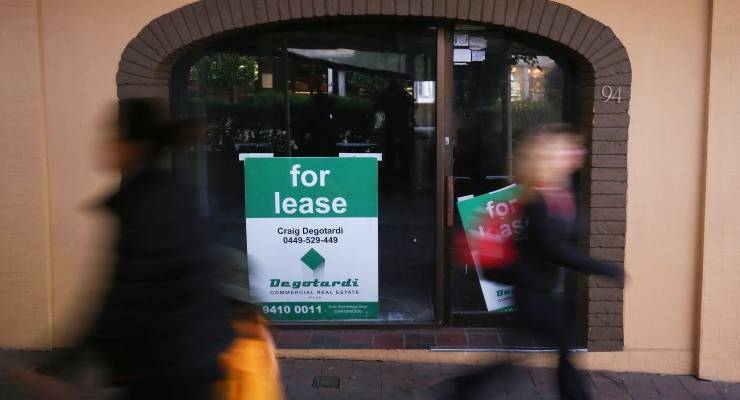
Has the sight of an empty parking space ever filled you with a sense of foreboding?
I had never had that experience before. But yesterday, I went to investigate the retail situation in inner Melbourne, and the sheer absence of people was intensely troubling.
On Tuesday I set off for a walk along Brunswick Street in Melbourne’s Fitzroy (which is, dear reader, within my 5km limit, fear not). Brunswick Street is an iconic strip of shops in a suburb which has gone from poor to cool to gentrified (and which is now arguably losing its aura of cool as a result). It runs north-south for 1.5km of retail and restaurants, pubs and pilates. Its southern terminus is just a few hundred metres from Melbourne’s CBD grid.
I felt compelled to go and check it out because the Reserve Bank of Australia had put the frighteners into me. They released this graphic as part of their Financial Stability Review, and it shows retailers fleeing their landlords in droves, leaving behind vacant shopfronts.

The phenomenon is worst in central business districts, where an absence of office workers is making retailing a very lonely existence. Note the pandemic is just the final straw for retail vacancy. A record share of shops were vacant even before the novel coronavirus swept the globe, thanks to high rents and pressure from online.
That is certainly the case on Brunswick Street, Fitzroy. I saw a lot of for lease signs — 30 in total on my 1.5km walk. But not all of those have gone up since the start of the lockdowns in Melbourne.

The pandemic, lockdowns and recession mean it will take even longer than expected to get new tenants in. Brunswick Street could be looking at vacant shopfronts for years.
That’s a problem because shopping streets depend on spill-overs from one shop to another. People come for coffee and then pop into a bookstore, for example. Or they come to visit a particular boutique and then buy something from a range of others. This is why shops cluster together. The agglomeration benefits are greater than the downside of competition.
But when a high street is full of vacant shopfronts, that spill-over effect becomes muted. All the shops suffer. One of the promises shopping centres make to their tenants is to keep vacancies low, but on a high street, with many different landlords, that doesn’t happen.
Won’t the market solve the problem?
Ha! As we know, shopfronts can sometimes sit vacant for years. In theory, yes, landlords simply drop the price of rent until they fill the space. In practice we see something else. That leaves economists scratching their heads.
One theory is if landlords fill a commercial space with a new tenant at a lower rent, it forces the property to be revalued. If the space now commands a lower rent it is worth less than before. Perhaps better to let it sit for a while and leave open the option of selling rather than to lock in a new lower rent
What can be done?
There is now a well-understood approach to underused retail space, and it comes from Australia. In the 2000s, Newcastle was dilapidated and its city centre was seemingly on the path to ruin. A scheme called Renew Newcastle was born.
Renew Newcastle has since been copied all over the country, including in Adelaide. At the risk of simplifying, the idea is to give artists and bohemians access to the empty shopfronts for free, or close to it, while leaving the right to promptly reclaim the space with the landlord. It doesn’t work everywhere, but it’s been very successful in Newcastle.
It’s been quite a while since artists could afford rent in Fitzroy. Maybe giving them back some space is just what Brunwswick Street needs.








Tax land and wealth, not income
Which, until a century and a bit ago, was the norm. The mooted capital gains tax at did not last a day in NZ (Labor government) a few months ago.
It’s a good piece, Jason and great summary. Perhaps the total lifting of martial law here in Melbourne might help too.
Fantastic idea! I miss the bohemian artistic heart of Fitzroy
Gawd. I’m feeling really old today. I can actually remember when artists (and poor people) could actually afford to live in Fitzroy.
It would certainly improve the current gentrified version of Fitzroy (and other inner suburbs) if they were encouraged back to repopulate the looming desert. Bring it on please.
Feeling old Paddy? I actually used to barrack for Fitzroy once. Is Roosy still alive?
How would a landlord identify a ‘bohemian’?
Following him/her to a fringe coffee shop.